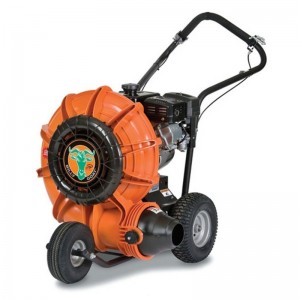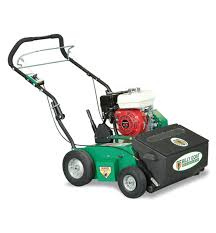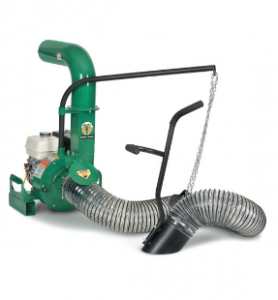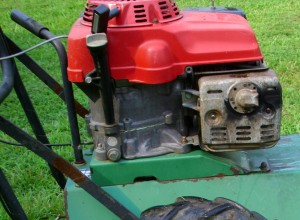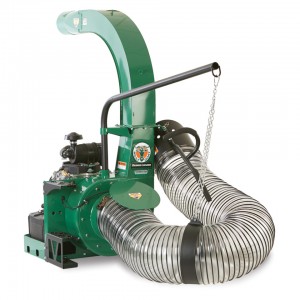 It’s easy to see why Billy Goat equips their DL37 debris loader with Vanguard’s EFI big block. This engine delivers market-leading power while being fuel-efficient and easy to start in cold weather. Since this engine is equipped with fuel injection, caring for it is a little different from the carburetted engines you’re probably used to. Here’s what you need to know to keep this engine running.
It’s easy to see why Billy Goat equips their DL37 debris loader with Vanguard’s EFI big block. This engine delivers market-leading power while being fuel-efficient and easy to start in cold weather. Since this engine is equipped with fuel injection, caring for it is a little different from the carburetted engines you’re probably used to. Here’s what you need to know to keep this engine running.
Maintenance Schedule
Every 8 hours of operation or daily: Check the oil level. Clean off any debris around the muffler and controls.
Every 100 hours or yearly: Replace the spark plugs. Change the oil and replace the oil filter. Clean the air pre-cleaner and air filter. Check the exhaust.
Every 250 hours: Have a professional mechanic adjust the valve clearance.
Every 400 hours or annually: Replace the air filter and fuel filter. Clean the cooling fins and oil cooler.
Oil
This engine holds 78-80 oz of oil, which is about two-and-a-half quarts. Vanguard recommends oil that meets SAE SF or higher specifications. The oil weight you need to use depends on the outside temperature.
SAE 30: above 40°F
10W-30: below 80°F
5W-30: below 40°F
Synthetic 5W-30: All temperatures
Always change the oil filter when you change the oil.
To change the oil:
1. Run the engine long enough to warm up.
2. Shut off the engine and disconnect the spark plug wires
3. Remove the dipstick.
4. Unscrew the drain plug. Collect the used oil in a suitable container.
5. Screw the plug back into the oil pan.
6. Unscrew the oil filter.
7. Apply a thin layer of clean oil to the new filter’s rubber gasket.
8. Screw in the new filter. Once the filter seats, turn it another ½ to ¾ turn to get a good seal.
9. Add oil through the dipstick tube.
10. Check the oil level.
Air Filter
Open the clips on the cap at the end of the filter, then pull the cap off of the air filter body. Clean the pre-filter inlet on the cap.
Pull out the filter. Depending on your engine, the paper filter may be hollow, or it may have a safety filter inside it. Slide the safety filter out, if equipped. This inner filter should be replaced each time you clean the main paper filter element.
Tap the paper filter against a hard surface to remove dirt build up. Replace as needed. Insert a new safety filter (if equipped.) Place the filter assembly in the airbox, and reinstall the cap.
Fuel
This engine needs gasoline with an octane rating of 87 or higher. 85 octane can be used if you’re at an altitude above 5,000 feet. The EFI system automatically adjusts the fuel mixture to match available air, so you don’t need to install a high altitude kit when using the engine at high elevations.
When storing. the fuel does not need to be drained from the fuel tank as long as it’s treated with a stabilizer. Keep the tank full to reduce oxidation, and run the engine for at least two minutes to flush the old gas out of the fuel lines and injectors.
If you need to clean or replace the fuel filter, drain the fuel tank by disconnecting the fuel hose next to the injectors. Collect the gas in a fuel container.
Spark Plugs
The gap for the plugs in this engine should be 0.030 inches (.76 mm). When installing, torque each plug to180 in-lbs.
Battery
Using a trickle charger will stop discharge and battery degradation during storage. Always disconnect the negative battery terminal before hooking the battery to a charger. Otherwise, you could short out the starter. Never try to start the engine with a charger connected to the battery.
Cooling System
The front cover is held on by two screws directly below the ignition and stop/start switch. With this cover removed, you can access the cylinders. Use a dry rag or a stiff brush to remove debris from the cooling fins. Be sure to clean thoroughly clean the tops of the cylinder heads and the screen around the flywheel.
Get the Parts You Need Straight from Your Smartphone or Computer
Billy Goat Parts is an authorized Billy Goat and Briggs & Stratton Vanguard dealer. That means we offer the same OEM parts used to build your machine, so you can maintain its reliability. Need spark plugs or an air filter? We have sections for these common parts, so you can find what you need quickly. If you need something more specific, our search engine can show you compatible parts based on your equipment’s model and serial number. We even have factory parts diagrams and descriptions, so you can always be sure you’re ordering exactly what you need. When you need parts for your Billy Goat, visit us at www.billygoatparts.com. We can ship your order to any address in the U.S. or Canada.


